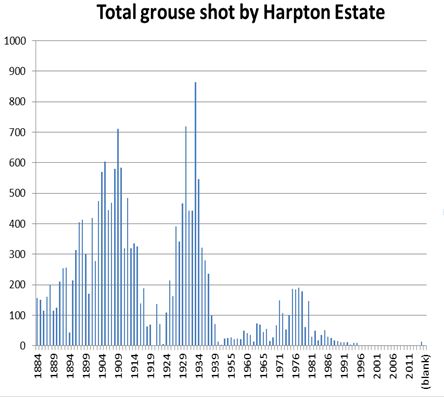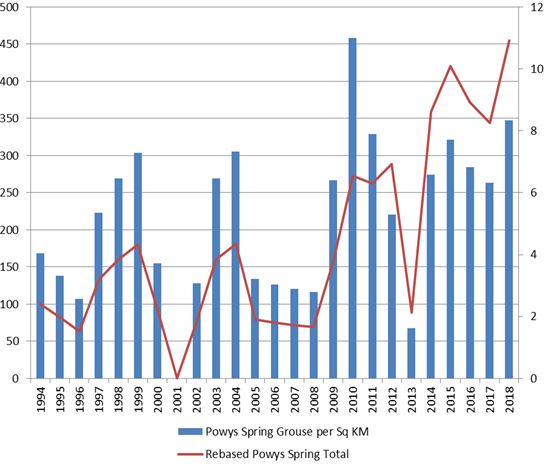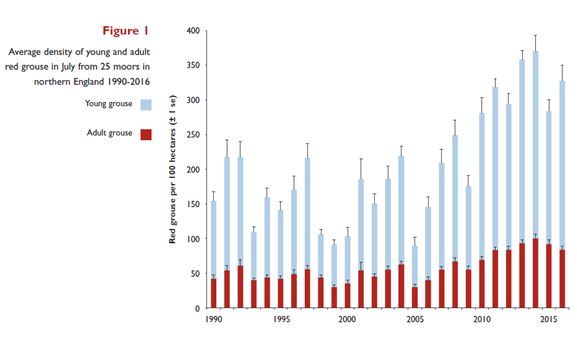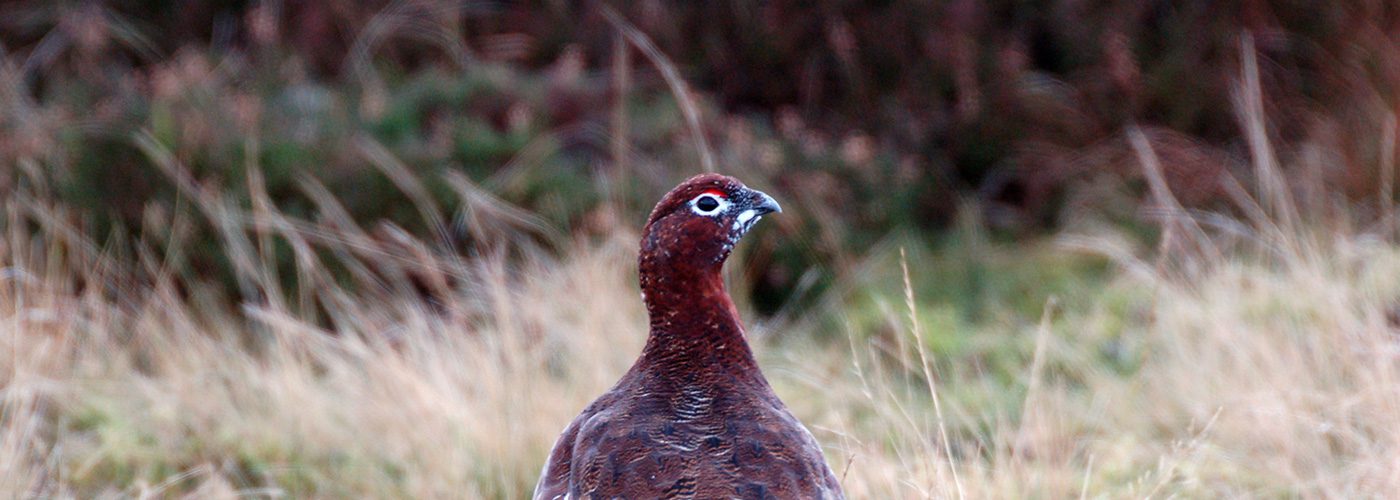A brief history of red grouse shooting 1900-1960s
As indicated by the graphs below, from 1900 to the end of the Second World War Powys enjoyed large numbers of grouse. The Beacon hills for example had so many grouse that the owners created a shooting lodge and train station to help people from London to enjoy its sport. It has a section of heather known to many as the Millionaire’s Mile in honour of the grouse drive over this area.

1960s – 1990s
After the War, a great deal of Welsh heather was lost due to conifer planting and the emergence of the Common Agricultural Policy which paid farmers according to stock numbers. Raptor numbers started to increase at the end of this period and grouse eaters like buzzards and hen harriers became protected species in the early 1980s.
By 1990 Ireland Moor and Gladestry were the best areas for grouse, but the number of birds shot and the number of moors with keepers had declined sharply. There were just ten keepered moors in Wales in 1990, with only 640 birds shot that summer.

2010-present
By 2010 there was not a single moor in Wales with a full-time grouse keeper.
The catalyst for change came in 2015 when the Welsh Governments Nature Fund sprinkled seed funding across nine moors, leading to keepers being employed to bring their management expertise to these neglected areas.
Thanks to the combination of Government support and private investment there are currently five full-time grouse keepers in Powys.
Aims for the future
As this Game & Wildlife Conservation Trust graph shows, red-grouse numbers in northern England have recovered well since 1990. In Wales this has not yet happened. Although the aim is not to achieve the densities seen in northern England, we are committed to creating a sustainable surplus of numbers so that we can support shooting of this economically important bird. This will require sensitive land and predator management with the emphasis being on creating sustainability for all – including flora, fauna, human, and community.
The spring count
Thanks to many recent years of hard work from the moorland keepers, the recent counting shows that the pairs of grouse this spring are more numerous than they have been since the 1970s.
The area counted is the moors above Painscastle (Ireland Moor) along with Gladestry, Gwaunceste and Beacon hills.
With that said, the percentage of the grouse that died during the winter due to predation and natural causes was over 40% across all Radnorshire moors – the yardstick to aim for is 30%.
This chart shows the grouse per square km (per 100 hectares) and an index of the increase in spring grouse since 1994.




Grouseoors are sterile areas for wildlife.
The rich should not be enjoying killing birds en mass.
Game keepers shoot birds of prey as and when they like.
All should be.licensed to make management more transparent.
Totally agree and the vast majority of country folk would agree too. As a local to Gwaunceste Hill I would not want to see driven grouse shooting, its an unsustainable Victorian past time that can’t exist with out raptor persecution and the elimination of everything thats not a grouse.